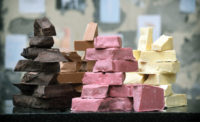Sensors that change color in the presence of oxygen can be useful in food packaging, according to its U.K. inventors.
A sensor that changes color in the presence of oxygen could be beneficial in food packaging, according to its U.K. inventors. The sensor turns blue in the presence of excess oxygen, indicating to the consumer that the food should be thrown away.
Oxygen promotes food spoiling processes such as microbial growth and protein decomposition. Thus, a lot of food is packaged using modified atmosphere, in which inert gases like nitrogen and carbon dioxide are flushed through the package to reduce oxygen concentration. There are already techniques to monitor oxygen in food packages, however, they can be expensive and some require specialist analytical equipment and trained operators.
The simplicity of the color change sensor developed by Andrew Mills and co-workers at Queen's University, Belfast, is that the package's integrity can be seen in situ by the consumer and is cheap enough for commercial use.
The sensor, which is made of titanium nanoparticles coated with methylene blue dye and sacrificial electron donor DL-threitol, is activated for use by photobleaching with UVA radiation. After the photobleaching stage, the sensor only turns blue in the presence of oxygen. This process can be recycled, but only by repeating the photoactivation stage. By incorporating this technology into food packaging, huge volumes of food waste could be prevented, claims Mills.
“Many of us throw away food simply because we are unsure of its freshness-a ‘consume within indicator’ would help address this issue,” Mills says.
Source: www.rsc.org
Color-changing Sensor Detects Spoiled Food
Looking for a reprint of this article?
From high-res PDFs to custom plaques, order your copy today!





